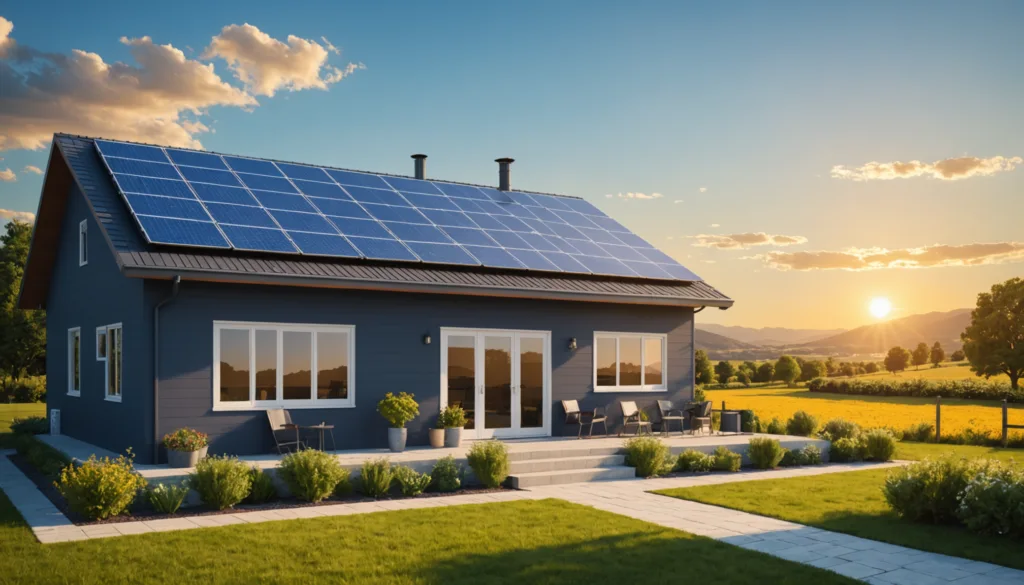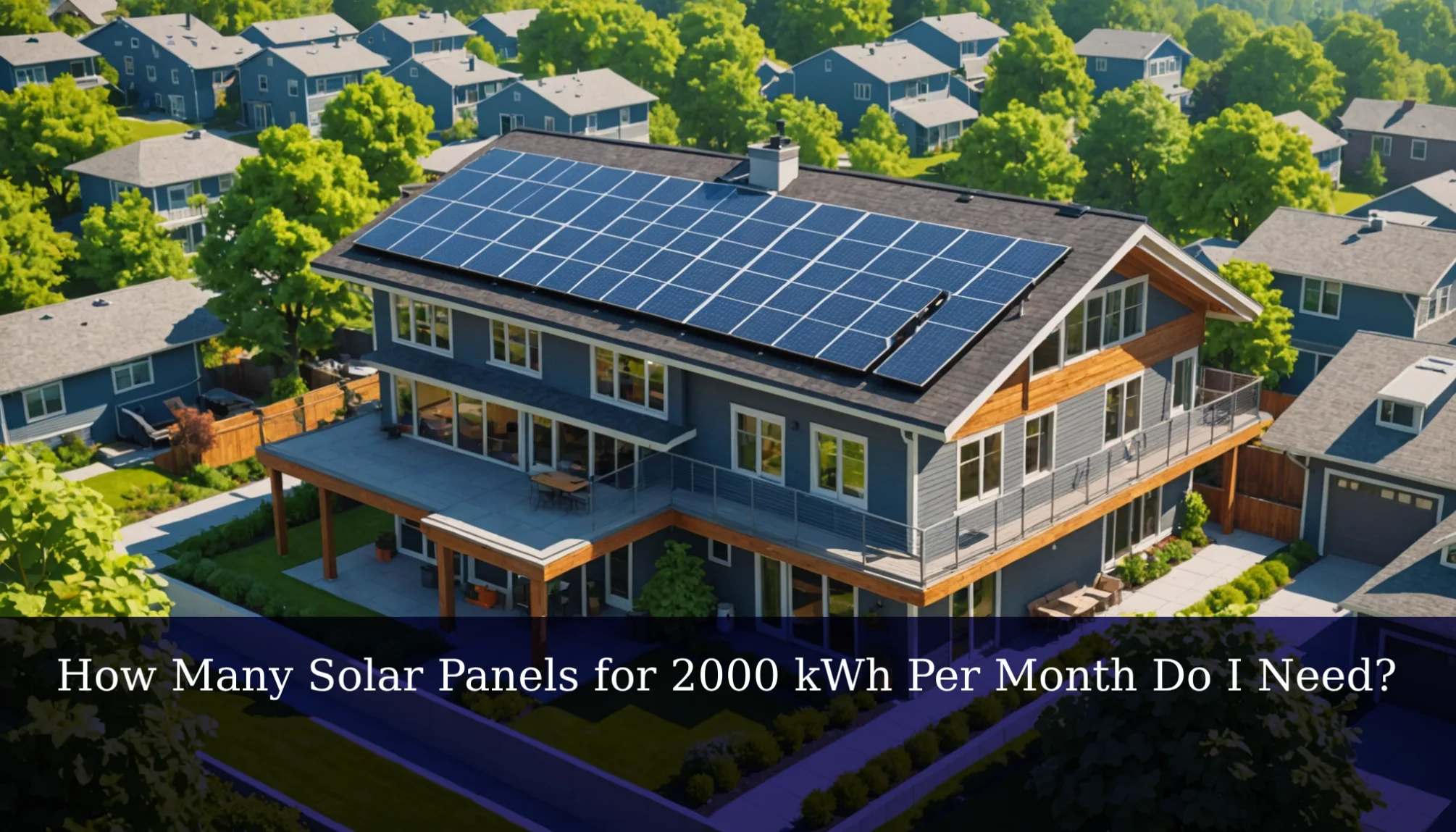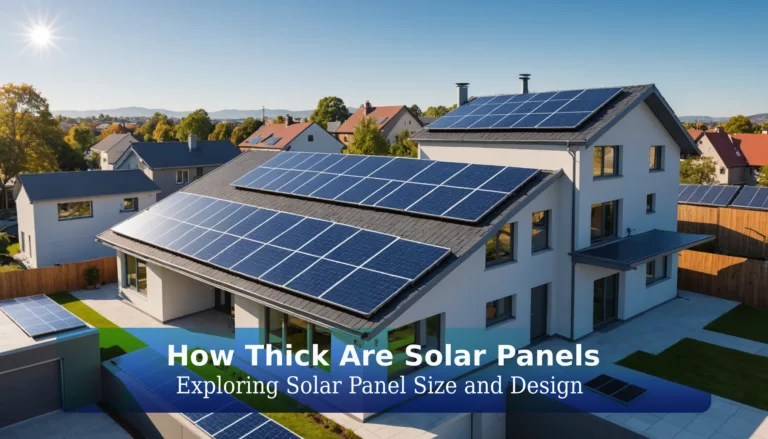How Many Solar Panels for 2000 kWh Per Month Do I Need?
Are you curious about how many solar panels you’ll need to power an entire home with 2000 kWh per month? Understanding how many solar panels for 2000 kWh per month is crucial for making smart energy choices and saving money on electricity bills! With the world shifting towards clean energy, learning about solar power can help you reduce your carbon footprint and embrace renewable energy sources.
If you don’t grasp how to estimate your solar needs, you could end up with too few panels, leading to higher energy costs. In this article, we’ll break down the process of calculating your solar panel requirements, explore factors like peak sun hours and panel efficiency, and give you tips on maximizing your solar system’s performance. Get ready to dive into the exciting world of solar energy and discover how you can harness the power of the sun!
How to Calculate How Many Solar Panels for 2000 kWh Per Month

Understanding Your Average Home Energy Consumption
The average American home uses approximately 877 kWh per month, but this varies widely depending on the size of the home, appliances used, and regional climate. For a home aiming for 2000 kWh, it indicates either a larger home or higher energy demands. Understanding your household’s specific energy needs is crucial for accurate solar panel calculations. (Sun Valley Solar, One5C)
Key Factors That Determine Your Solar Panel Requirements
The efficiency of the solar panels and the system’s overall design significantly impact the number of panels needed. More efficient panels can produce more energy in less space. Additionally, the orientation and installation angle of the panels can further enhance their energy output.
Step-by-Step Process to Calculate the Number of Solar Panels Needed
- Determine Energy Needs: For 2000 kWh per month, divide by 30 to get daily needs:
- Monthly Energy Requirement: 2000 kWh
- Days in a Month: 30
- To find the daily energy needs, use the formula: Daily Energy Needs=Monthly Energy Requirement / Days in a Month
- Substituting the values: Daily Energy Needs=2000 kWh / 30≈67 kWh per day
- This calculation establishes a baseline of approximately 67 kWh per day for your solar energy requirements.
- Estimate Peak Sun Hours: The average peak sun hours vary by location. In the U.S., this can range from 4 to 7 hours per day. Knowing your local peak sun hours helps in estimating how much solar energy can be harnessed.
- Calculate Panel Output: A standard solar panel typically produces about 300 watts (0.3 kW). To estimate the daily production per panel, the following formula can be used: Daily output=Panel wattage×Peak sun hours
- Example Calculation:
- Panel wattage: 0.3 kW
- Peak sun hours: 5 hours
- Using the formula: Daily output=0.3 kW×5 hours=1.5 kWh per panel per day
- This estimated output of 1.5 kWh per panel per day will help you determine how many panels are necessary to meet your energy needs.
- Example Calculation:
- Calculate Number of Panels: Divide daily energy needs by the daily output of one panel:
- Daily Energy Needs: 67 kWh
- Daily Output per Panel: 1.5 kWh
- To find the number of panels needed, use the formula:
- Number of Panels=Daily Energy Needs / Daily Output per Panel
- Substituting the values: Number of Panels=67 kWh / 1.5 kWh per panel≈45 panels needed
- To meet your monthly energy requirements, you will need approximately 45 solar panels.
- To find the number of panels needed, use the formula:
The Average Number of Solar Panels Needed for 2000 kWh Production

Standard Solar Panel Output and Efficiency Ratings
Most solar panels available today have wattage ratings between 250W and 400W, with efficiency ratings around 15% to 22%. Higher efficiency panels may have a higher upfront cost but can lead to greater long-term savings through reduced energy bills. (LA Solar, Fenice Energy)
Average Solar System Size to Generate 2000 kWh Monthly
Based on the previous calculations, a system capable of producing 67 kWh/day requires approximately 45 panels, assuming each panel generates about 1.5 kWh per day. This calculation indicates that an adequately sized system can meet or exceed your energy consumption goals.
Comparing Solar Panel Quantities Based on Different Wattage Options
Using higher wattage panels (e.g., 400W panels) reduces the number needed. For instance, if each produces 2 kWh per day, the number required drops to about 34 panels. Selecting the right wattage can optimize your installation based on available roof space and budget.
Several Factors That Affect How Many Solar Panels Do I Need

Impact of Peak Sun Hours on Solar System Performance
Locations with more sunlight (e.g., southwestern U.S.) can produce more energy and therefore require fewer panels than cloudier regions. Consideration of local weather patterns and climate helps in planning an efficient solar installation.
How Geographic Location Can Determine Solar Panel Quantity
States in the sunny Southwest may average about 6 peak sun hours, while northern states may average around 4. Understanding your geographic context can help in making informed decisions about your solar system design.
The Role of Roof Orientation and Shading in System Efficiency
South-facing roofs with minimal shading optimize solar energy capture, while shaded areas significantly reduce system efficiency. Analyzing potential shading from trees or neighboring buildings is vital for maximizing energy production.
Solar System Installation Considerations for 2000 kWh Production

Assessing Your Roof’s Capacity for Solar Panel Mounting
Roof capacity must be assessed to ensure it can support the weight and installation of solar panels. Engaging a professional to evaluate your roof’s condition can prevent future structural issues. Factors like the tilt angle and overall condition of roofing materials should also be considered, as these affect how many solar panels can be installed and their optimal positioning.
Professional vs. DIY Solar System Installation Options
While DIY installation can save costs, professional installation ensures compliance with local regulations and optimizes system performance (Chariot Energy). Professionals also provide warranties that protect your investment over time. Moreover, certified installers can better assess the specific energy needs of your home, ensuring that the system is sized appropriately based on your electricity consumption and sunlight exposure.
Permits and Regulations That May Affect Your Solar Project
Many locations require permits for installation, which can affect project timelines and costs. Familiarizing yourself with local regulations early in the process can streamline your installation experience. Understanding zoning laws, building codes, and any potential HOA restrictions is essential to avoid delays and ensure that your solar project meets all necessary requirements.
Optimizing Your Solar Panel System to Generate Maximum Power

Latest Technologies to Enhance Solar Panel Efficiency
Innovations such as bifacial panels and tracking systems can increase energy output. Staying current with these technologies may offer substantial benefits over conventional systems. Additionally, newer inverter technologies can improve the efficiency of energy conversion, maximizing the amount of energy produced, especially during peak sun hours.
Battery Storage Options to Maximize Your Solar System Benefits
Battery systems allow for energy storage for nighttime use, enhancing efficiency and self-sufficiency. Investing in battery storage can provide additional savings by reducing reliance on grid electricity during peak pricing times. This capability ensures that you can utilize the energy generated during the day, even when sunlight is not available.
Monitoring and Maintenance to Ensure Optimal Energy Production
Regular monitoring ensures that systems operate efficiently, and maintenance can prevent energy loss. Implementing a monitoring system helps track performance and identify any issues promptly. This proactive approach allows for adjustments based on the amount of sunlight received throughout the year and any changes in energy consumption patterns.
Conclusion
To generate 2000 kWh per month, approximately 34 to 45 solar panels are needed, depending on the panel efficiency, peak sun hours, and specific energy needs. Factors such as geographic location, roof conditions, and local regulations also play critical roles in determining the final number. A thorough understanding of these elements will empower you to make informed decisions about your solar energy system.
FAQs
1. How many solar panels do I need to generate 2000 kWh per month?
Typically, you will need between 34 to 45 solar panels to generate approximately 2000 kWh per month based on factors like panel efficiency and local sunlight conditions.
2. What factors influence the number of solar panels required?
Key factors include peak sun hours in your area, the efficiency rating of the solar panels, geographic location, roof orientation, and shading from surrounding structures.
3. Should I consider battery storage with my solar panel system?
Yes, incorporating battery storage allows you to store excess energy generated during the day for use at night or during cloudy days, enhancing overall efficiency and energy independence.







